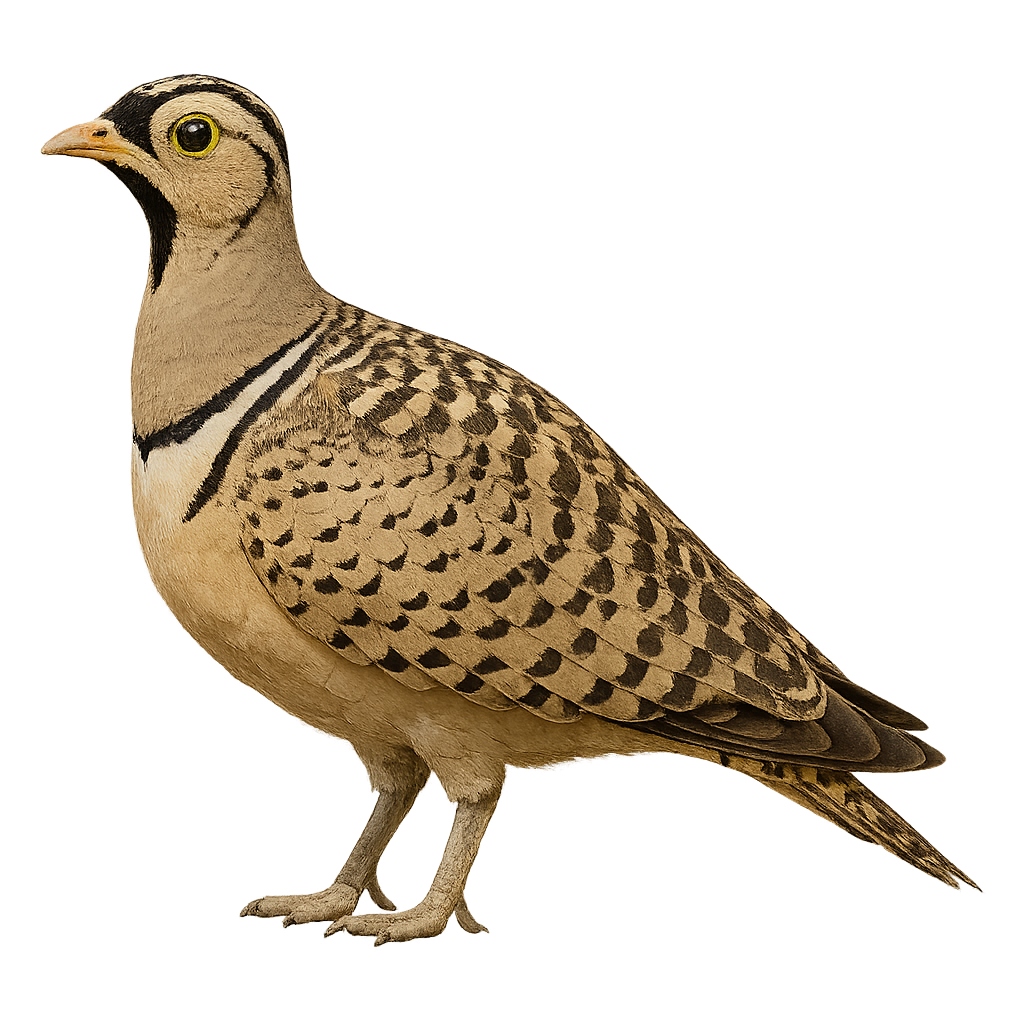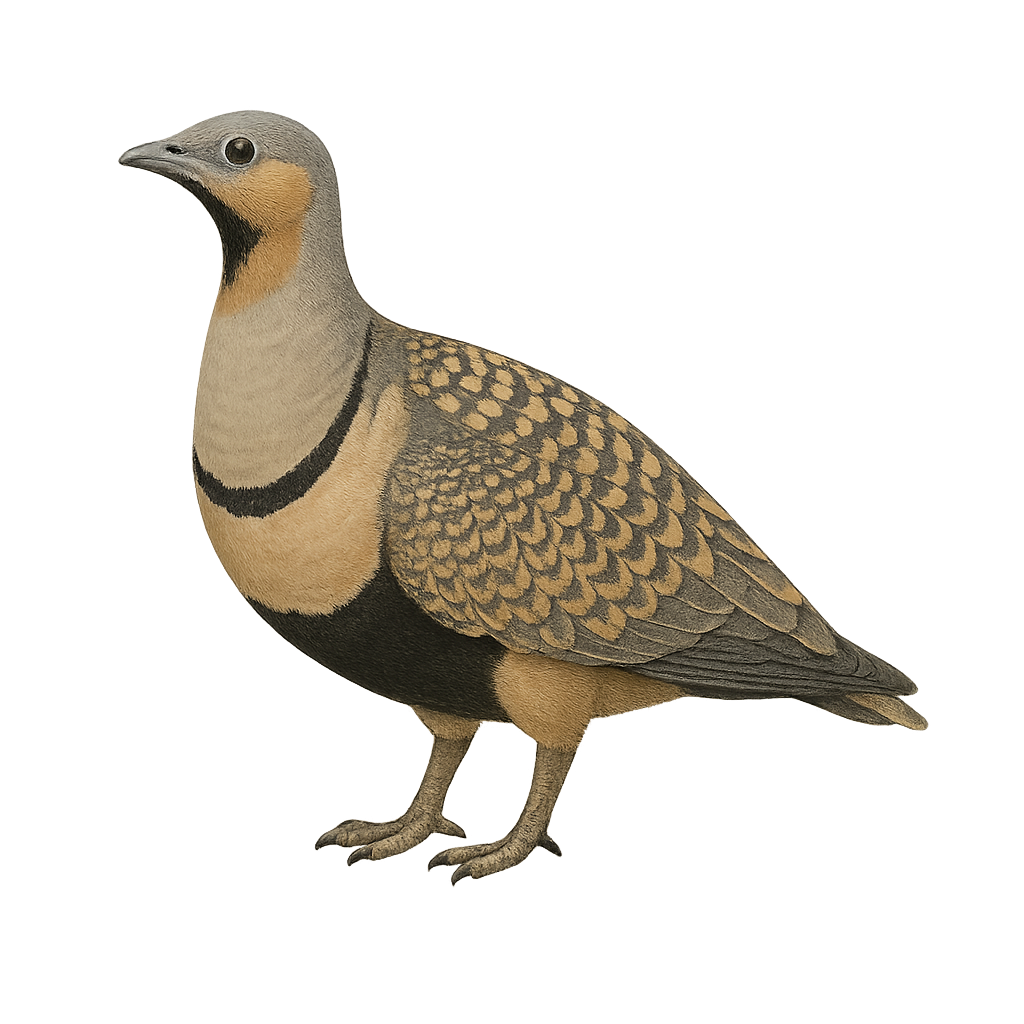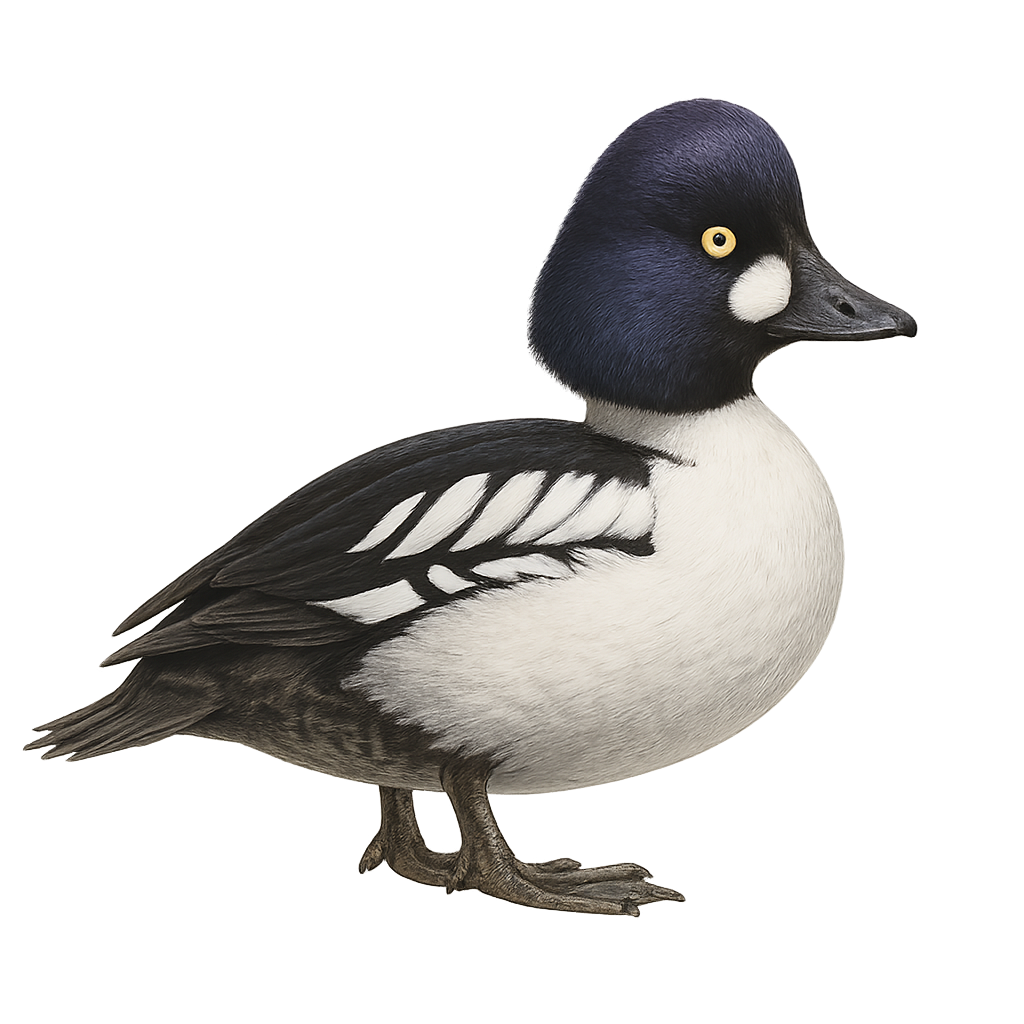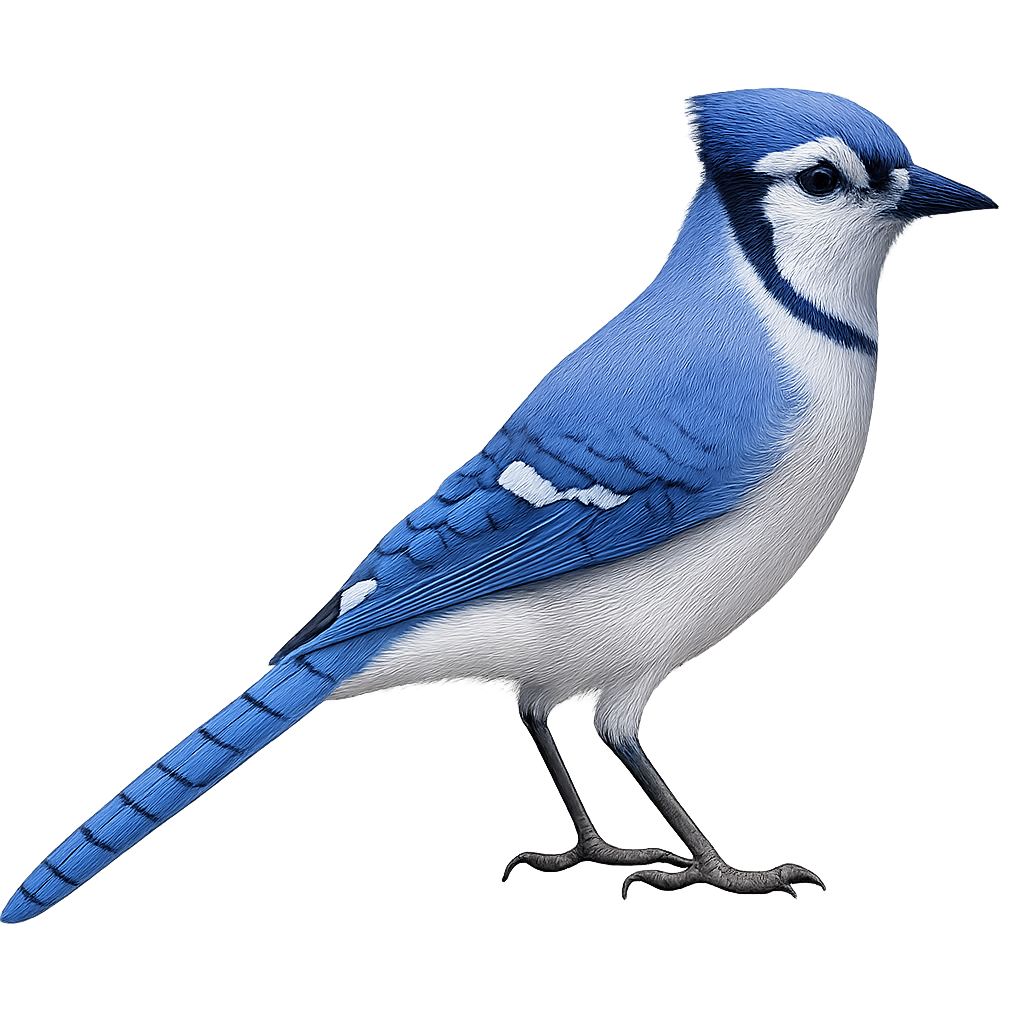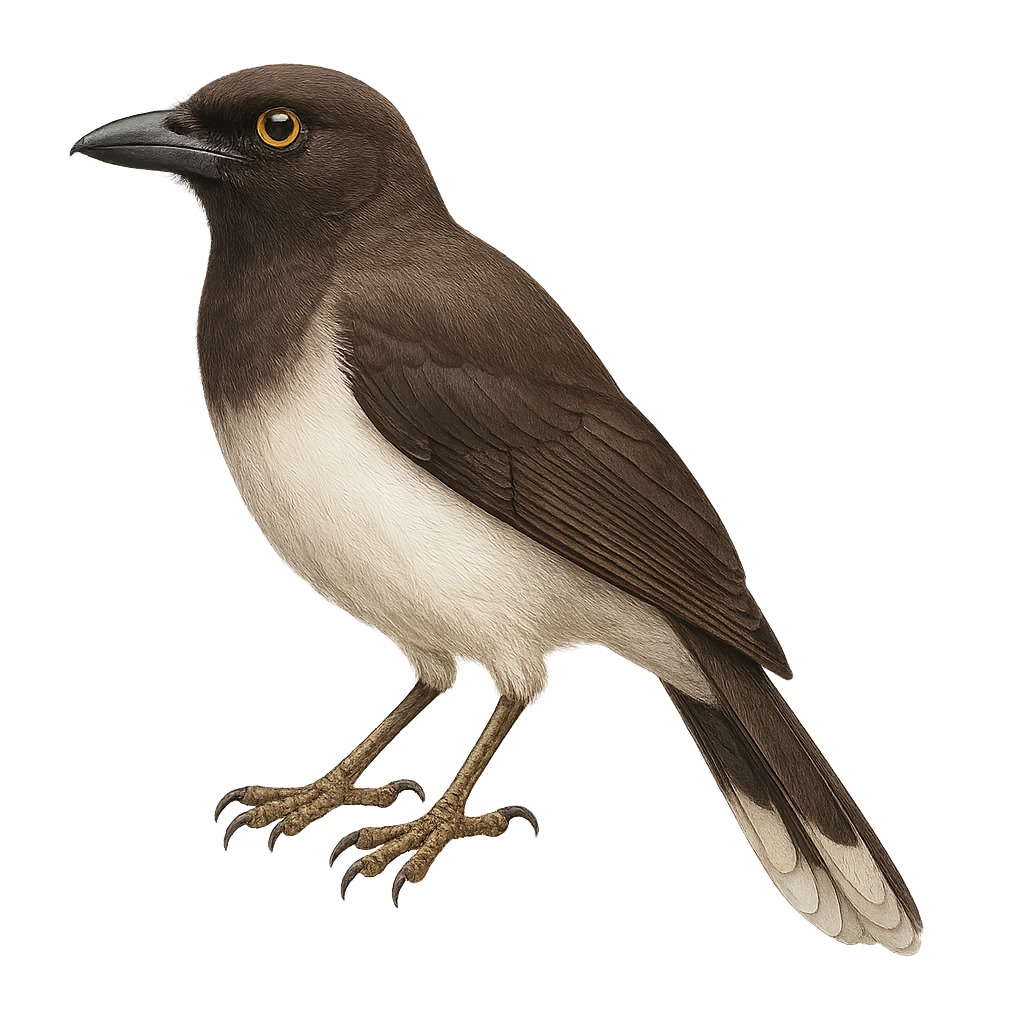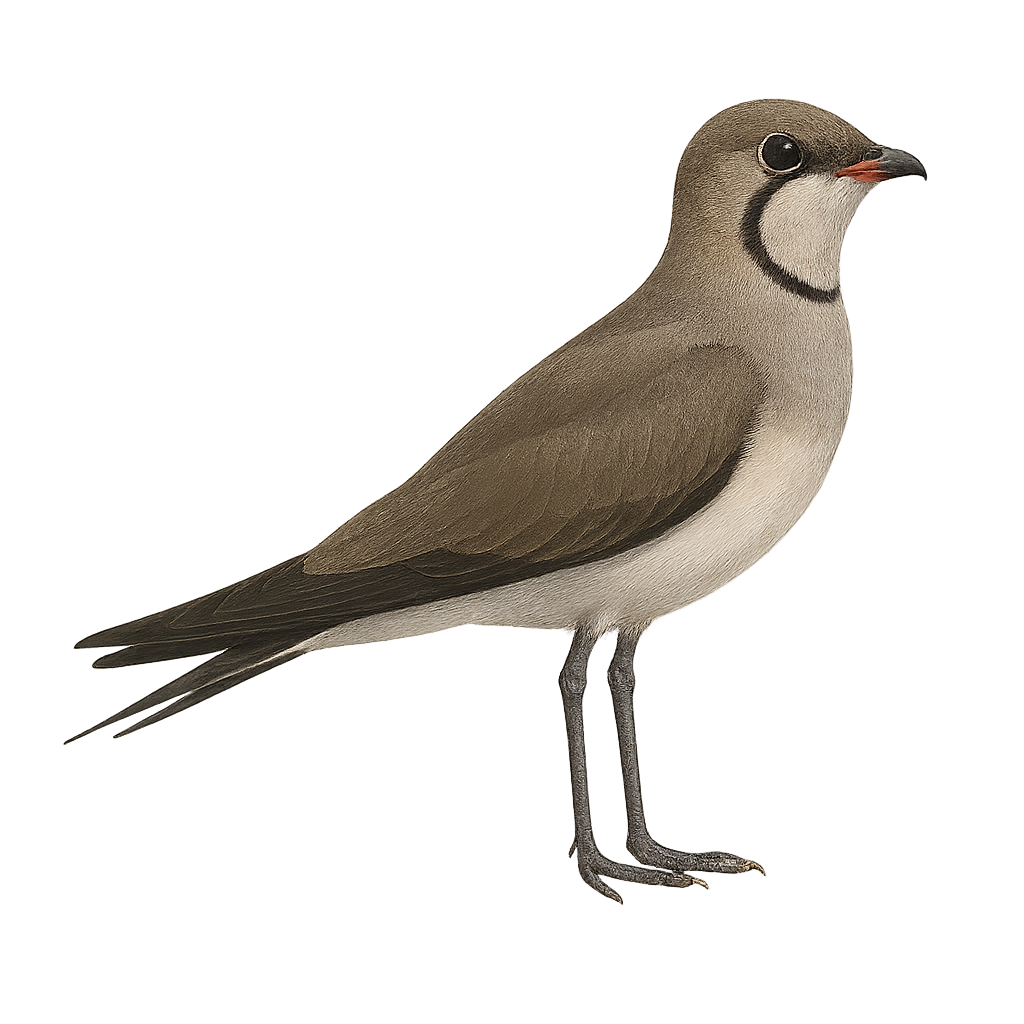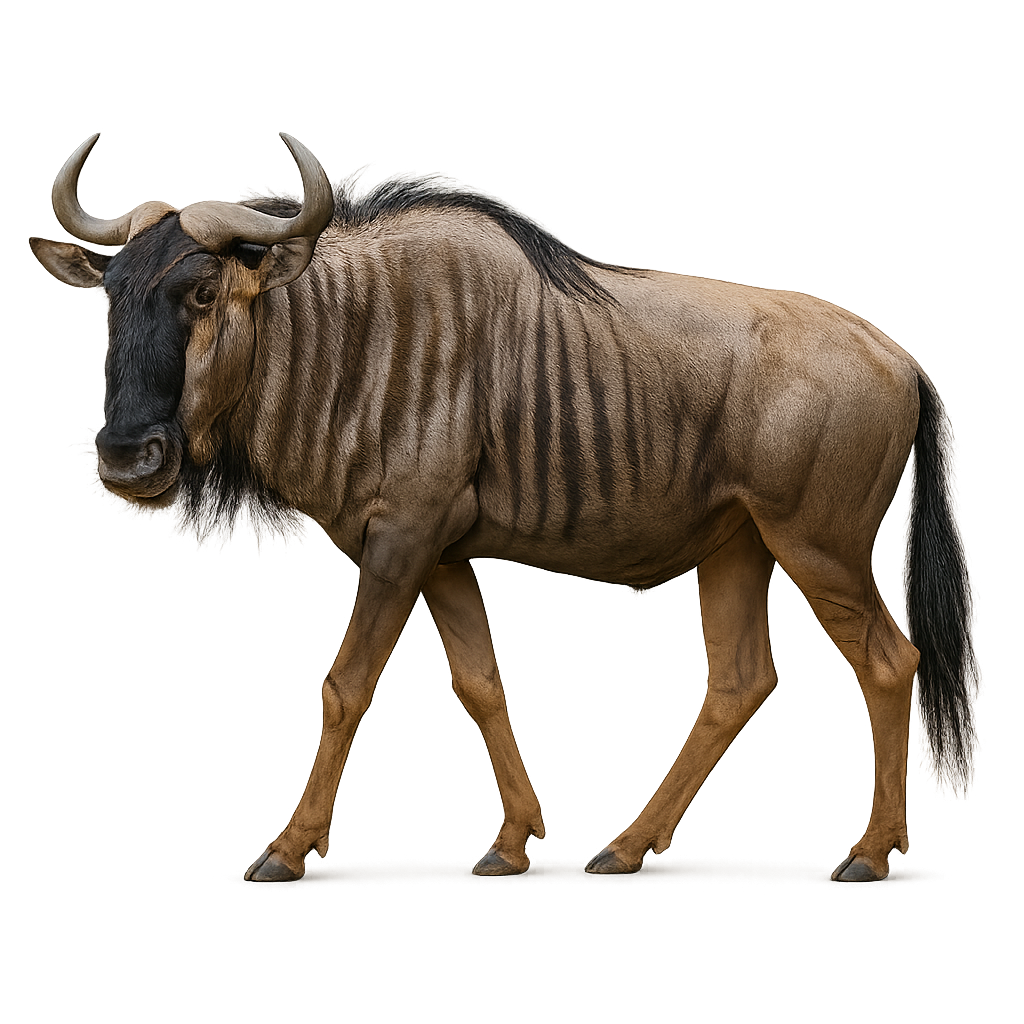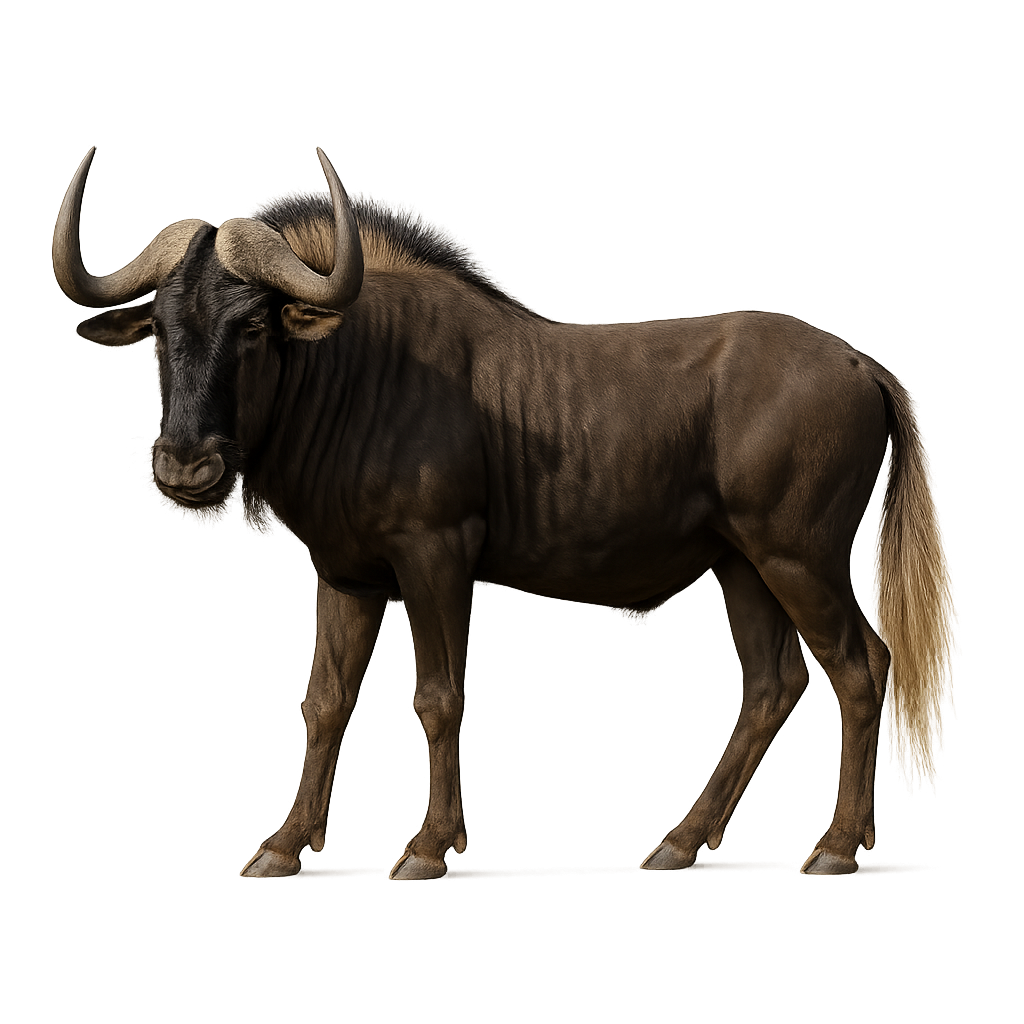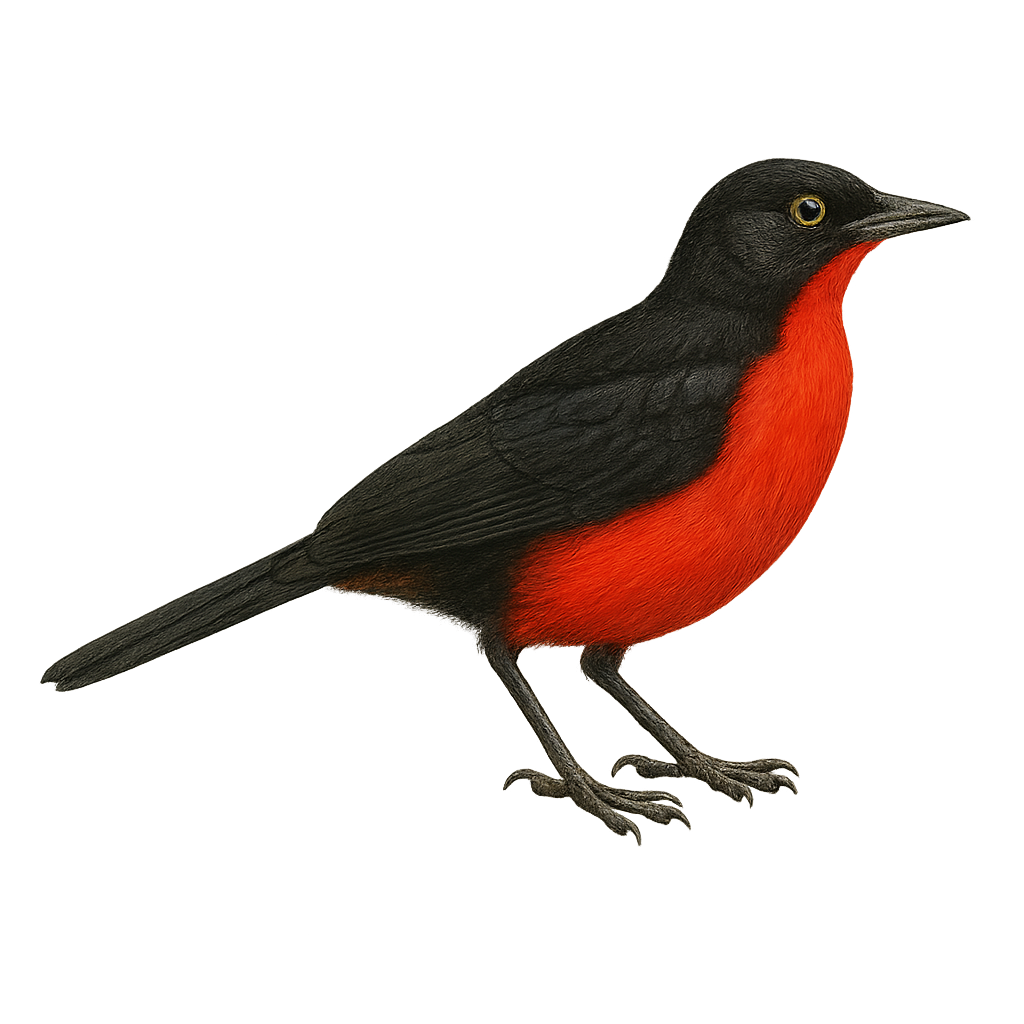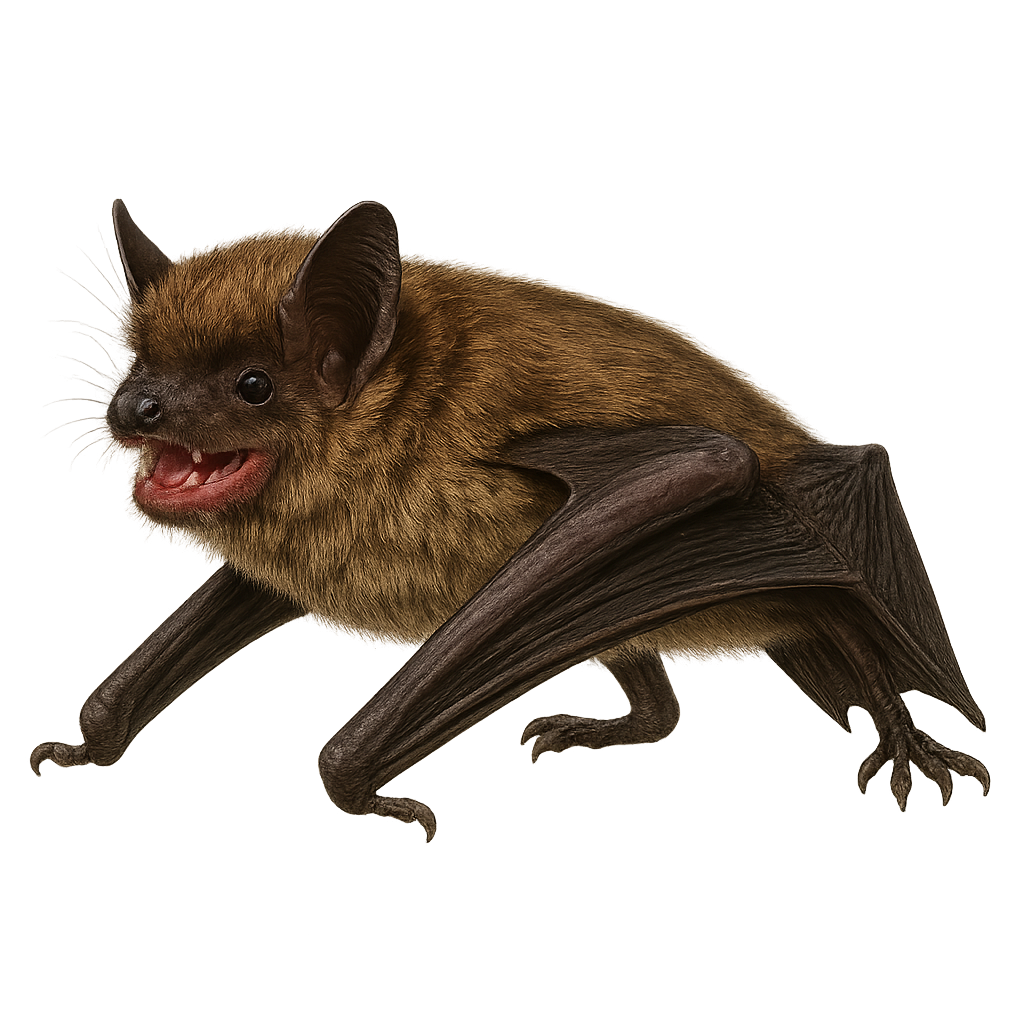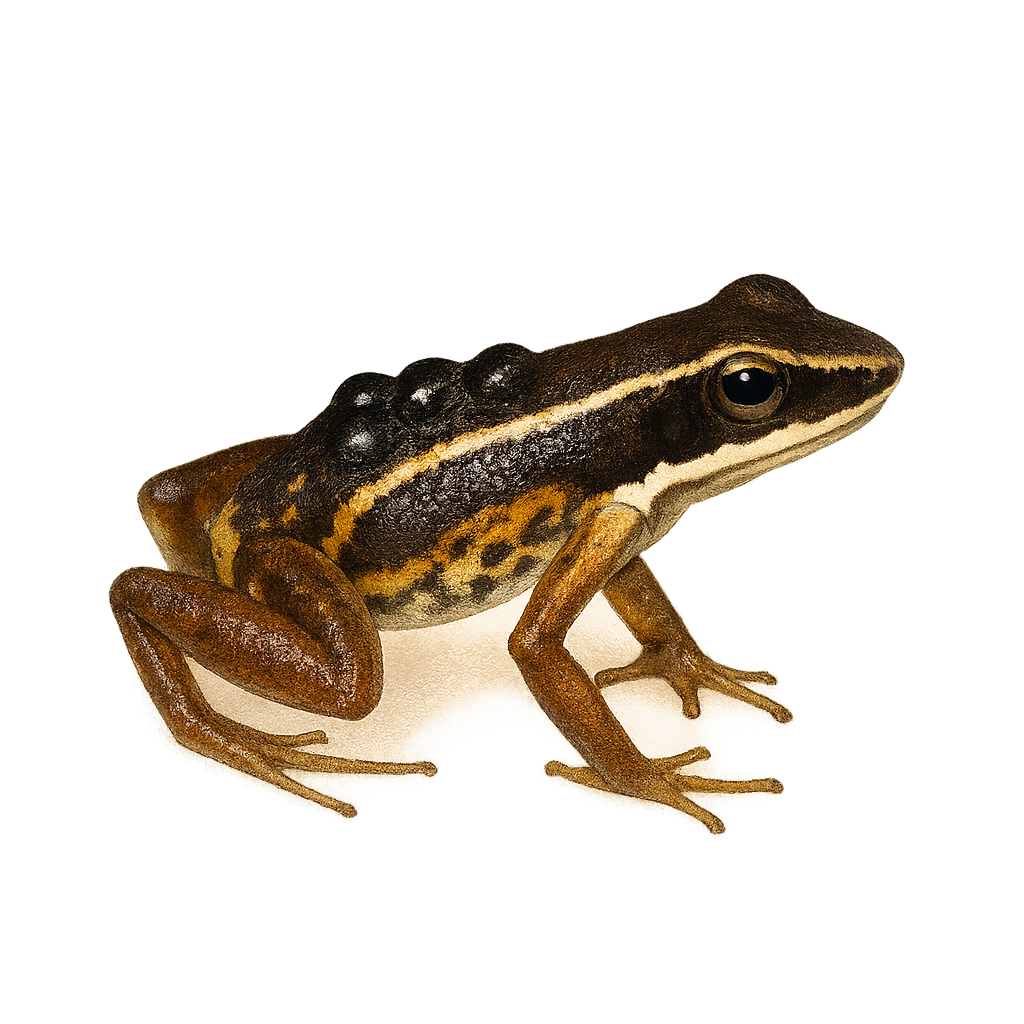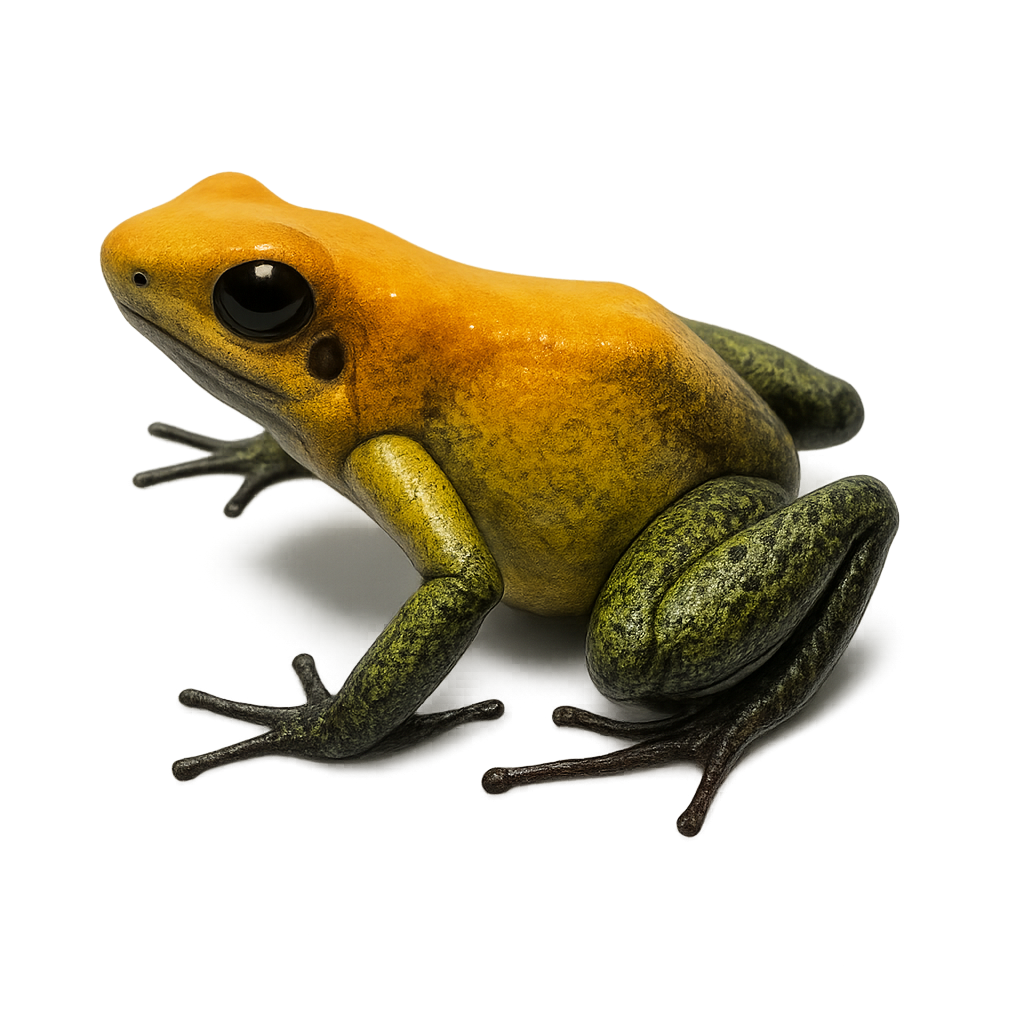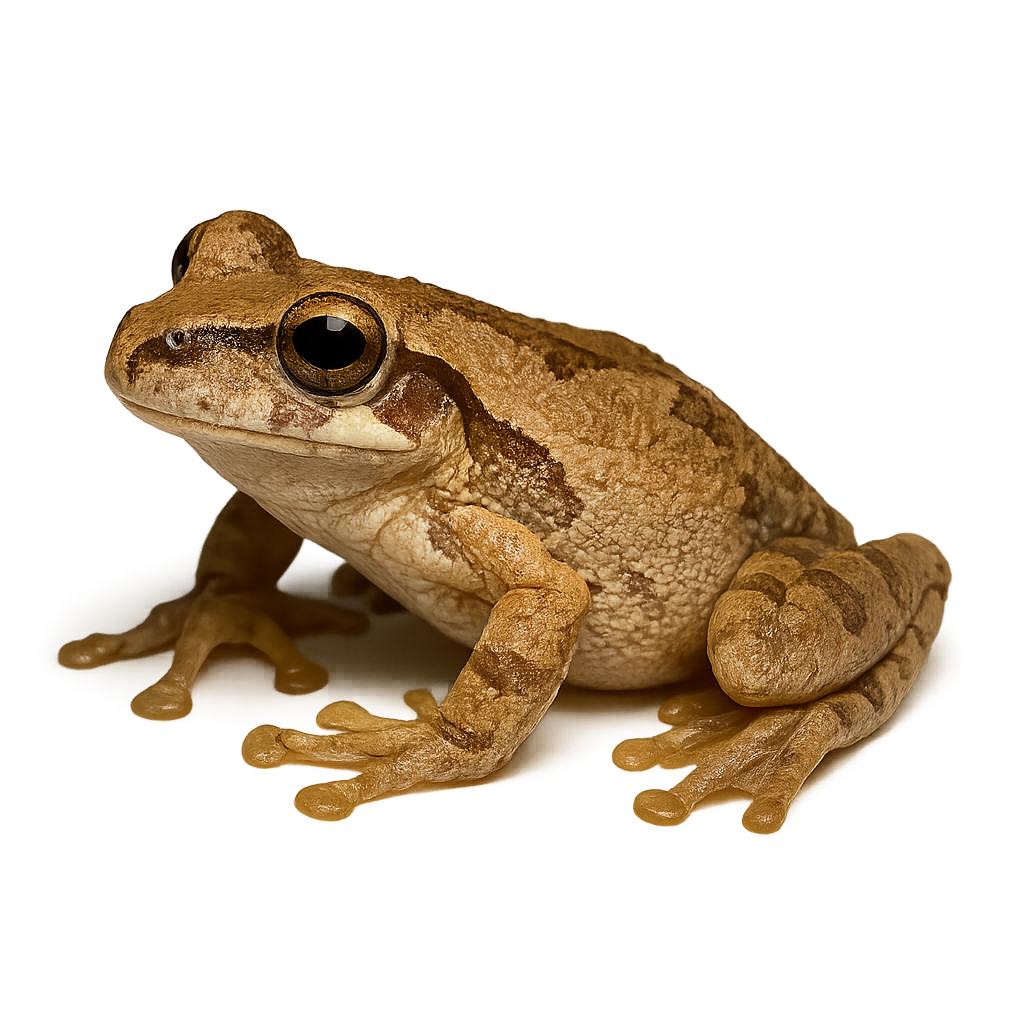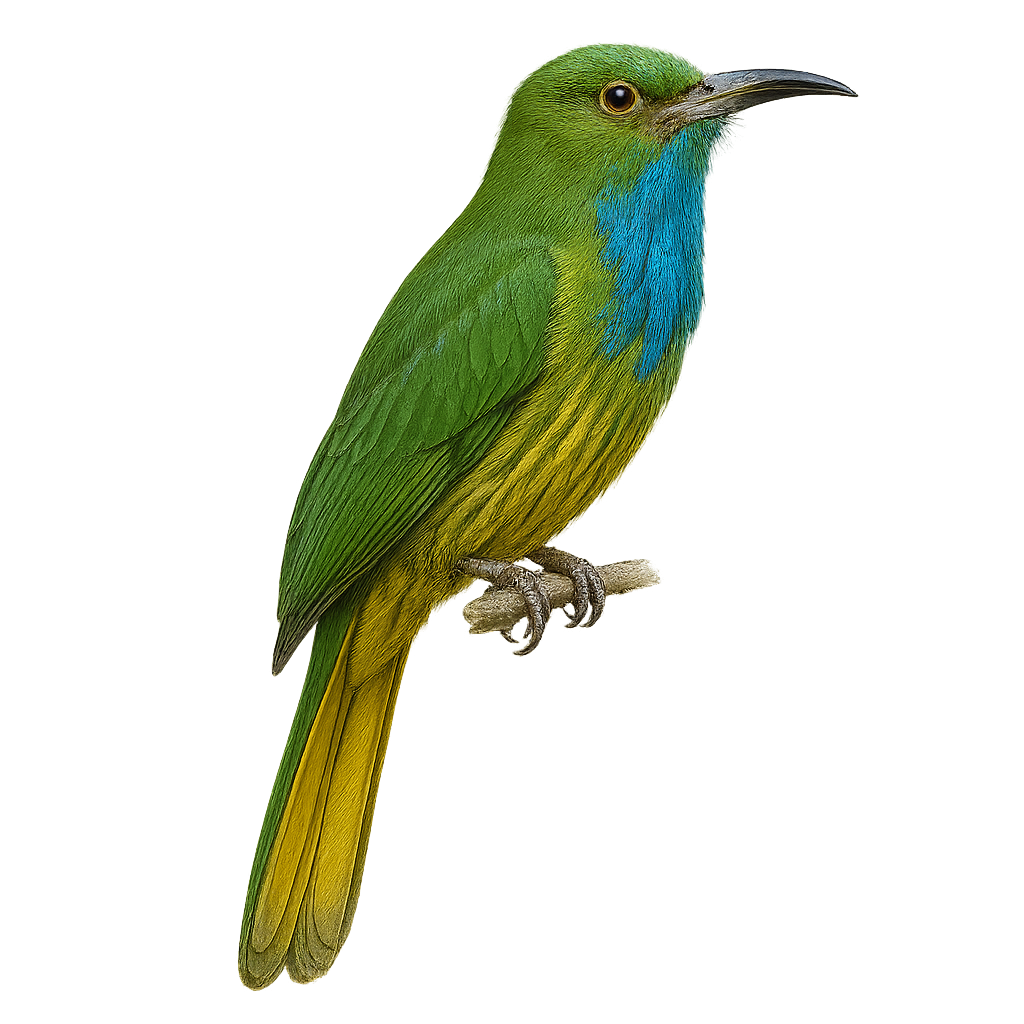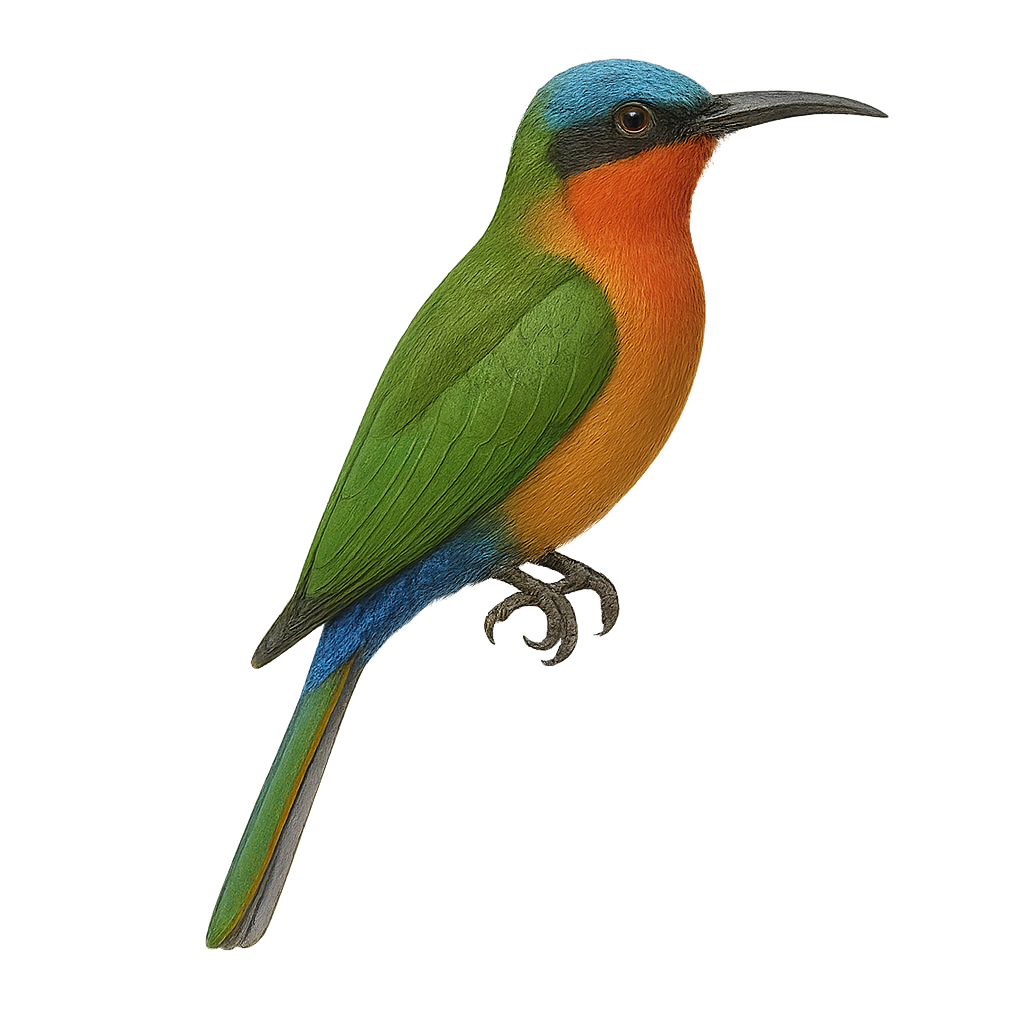The Pterocles decoratus, commonly known as the Black-faced Sandgrouse, is a medium-sized bird belonging to the Pteroclidae family. It is primarily found in the arid and semi-arid regions of East Africa, particularly in Kenya and Tanzania. This bird is distinguished by its cryptic plumage, which allows it to blend into its sandy environment. Males feature a characteristic black face, contrasting with the rest of their brown and beige plumage. Females are duller, providing additional camouflage during nesting. Black-faced Sandgrouse primarily feed on seeds and are often observed in groups near water sources, especially at dawn and dusk.
The Pterocles orientalis, or black-bellied sandgrouse, is a medium-sized bird known for its cryptic plumage that blends seamlessly into arid landscapes. Males feature a distinctive black belly, contrasting with their sandy-brown plumage. Females are duller, providing effective camouflage during nesting. This bird is primarily terrestrial, feeding on seeds and dry vegetation. It is often seen in flocks, especially around water sources at dawn and dusk. Its flight is swift and direct, often accompanied by noisy wingbeats.
The Barrow's Goldeneye is a medium-sized diving duck, easily identifiable by its rounded head and distinctive black and white plumage. Males have a black head with purple iridescence and bright yellow eyes, while females have a chocolate-brown head with a white eye ring. They breed primarily in the northern regions of North America and Iceland, favoring lakes and rivers bordered by forests. In winter, they migrate to milder coastal waters. Their diet mainly consists of mollusks, crustaceans, and aquatic insects. Although they are relatively tolerant, they can be suspicious of humans.
The Bright's Gazelle is an elegant, medium-sized antelope, recognizable for its slender proportions and long, thin legs. It stands about 75 cm at the withers and weighs between 30 and 40 kg. Its coat is generally light beige, with darker markings on the flanks and a distinctive black stripe running along its lateral line. Adult males have fine, curved horns, while females generally lack them. The Bright's Gazelle primarily inhabits the savannas and steppes of East Africa, particularly in Ethiopia and Kenya. It is herbivorous, feeding mainly on grasses, leaves, and plants. Like all gazelles, it is fast and agile, capable of running at speeds of up to 80 km/h to escape predators. Although the Bright's Gazelle is not currently endangered, it faces threats related to habitat loss, hunting, and competition with livestock for food resources.
The Blue Jay, Cyanocitta cristata, is a striking bird with predominantly blue plumage accented with white and black. Easily recognizable by its distinctive crest and loud call, this bird is omnivorous, feeding on seeds, insects, and occasionally small vertebrates. It is commonly found in deciduous and mixed forests, as well as urban parks and gardens. Known for its intelligence, the Blue Jay can mimic sounds, including the calls of other birds. It plays a crucial role in seed dispersal, aiding forest regeneration.
The Brown Jay, or Cyanocorax morio, is a bird from the Corvidae family, primarily found in Central America. It is characterized by its dark brown plumage, contrasting with lighter wings and tail. Its head features a black mask around the eyes and a strong beak. This sociable bird lives in family groups and is often seen in tropical forests, mangroves, and open woodlands. Opportunistic, it feeds on fruits, insects, and sometimes small vertebrates. Its call is loud and varied, used to communicate with its peers. The Brown Jay plays a crucial role in seed dispersal, aiding forest regeneration.
The Black-winged Pratincole, Glareola nordmanni, is a medium-sized migratory bird belonging to the Glareolidae family. It is recognizable by its light brown plumage, black wings, and forked tail. This bird is known for its ability to fly rapidly and perform impressive aerial acrobatics to catch insects in flight. It is primarily found in the steppes and open grasslands of Eastern Europe and Central Asia. The Black-winged Pratincole migrates to sub-Saharan Africa for the winter. It nests on the ground, often in loose colonies, and prefers habitats near water. Although its conservation status is concerning due to habitat loss, it remains relatively widespread in some regions.
The Blue Wildebeest is a large herbivorous antelope, easily recognizable by its massive body, imposing head, and black mane. It stands about 1.3 to 1.5 meters at the withers and typically weighs between 150 and 250 kg. Its coat is generally grayish-blue, with black markings on the head, legs, and shoulders. The Blue Wildebeest has curved horns that can reach 80 cm in length. It primarily inhabits the savannas, grasslands, and woodlands of Southern Africa, notably in South Africa, Botswana, and Namibia. Herbivorous, the Blue Wildebeest mainly feeds on grasses and low vegetation, often seen in large herds in open plains. It is commonly seen during large migrations, moving in search of food and water. While the species is not currently endangered, it faces risks related to habitat loss and hunting.
The Black Wildebeest is a large herbivorous antelope, easily recognizable by its robust build and massive head. It stands about 1.3 to 1.5 meters at the withers and weighs between 150 and 250 kg, with males generally being larger and heavier than females. Its coat is a deep black, with white markings on the throat and legs, and a black mane that distinguishes its neck. The Black Wildebeest is particularly known for its curved horns, which can reach up to 80 cm in length. It primarily inhabits the savannas and grasslands of West and Southern Africa, notably in Senegal, Namibia, and Botswana. Herbivorous, it primarily feeds on grasses and other herbaceous vegetation. The Black Wildebeest often lives in large groups, which helps protect it from predators. While the species is not endangered, it is threatened by habitat loss and climate change, which alters its living conditions.
The Laniarius erythrogaster, commonly known as the Black-headed Gonolek, is a striking bird with vivid red underparts and a black head and back. It primarily inhabits the savannas and open forests of sub-Saharan Africa. This bird is often seen in pairs, producing melodious duets. It measures about 20 cm in length and feeds mainly on insects and small invertebrates. Although relatively discreet, its distinctive song makes it easier to spot. It plays a crucial role in the ecosystem by controlling insect populations.
The Bluethroat is a small songbird, easily recognizable by its bright blue throat, bordered by a black band, forming a distinctive "mirror" pattern. It measures about 13 to 14 cm in length, with a wingspan of 22 to 25 cm, and weighs around 15 to 20 g. Its plumage is generally brownish on the back and light on the belly, with white and orange markings on the sides of its chest. The Bluethroat is primarily found in marshy areas, shrublands, and riverbanks in Europe and Central Asia, although some populations migrate to North Africa during the winter. It is especially known for its melodious song, which is often heard during the breeding season. The species primarily feeds on insects, worms, and small berries. While the Bluethroat is not endangered, it faces risks related to the loss of its natural habitat and changes in wetland areas.
The bottlenose dolphin is one of the most well-known and widely distributed dolphin species across warm and temperate seas. It is easily recognizable by its 'bottle-shaped' rostrum and dynamic social behavior. Highly intelligent, it lives in social groups called 'pods,' and its communication is varied and sophisticated. The bottlenose dolphin primarily feeds on fish and squid, often using group hunting techniques. Although not currently threatened, it is sometimes affected by marine pollution and accidental captures.
The Eptesicus fuscus, commonly known as the big brown bat, is a widespread species in North America. It is notable for its relatively large size for a North American bat, with a wingspan reaching up to 33 cm. Its fur is dark brown, contrasting with its lighter belly. It inhabits various environments, from forests to urban areas, and primarily feeds on flying insects, which it captures in flight using its efficient echolocation. This species is known for its ability to hibernate in sheltered places during winter, such as caves or abandoned buildings.
The Mantidactylus femoralis is a frog species endemic to Madagascar, predominantly found in the island's humid tropical forests. It is identifiable by its robust thighs and brown coloration, which allows it to blend into its natural surroundings. This medium-sized frog has smooth skin and subtle patterns that vary slightly among individuals. It plays a crucial role in the ecosystem as an insect predator, helping to regulate invertebrate populations. Although its habitat is threatened by deforestation, it remains relatively widespread in protected areas. Its ability to adapt to different microhabitats provides it with a survival advantage.
Hyloxalus abditaurantius is a small, brightly colored frog native to the humid tropical forests of South America, primarily in Ecuador. It is distinguished by its vivid coloration, often with shades of orange and brown, allowing it to blend effectively into its natural habitat. This species is typically found near streams and wetlands, where it primarily feeds on insects. Although discreet, it plays an essential role in the ecosystem by regulating insect populations. Its reproduction usually occurs during the rainy season when conditions are ideal for tadpole development.
The Phyllobates bicolor, or bicolored poison dart frog, is a venomous frog species native to the humid rainforests of Colombia. Known for its smooth, shiny skin, it often displays bright yellow with shades of green or blue. This vivid coloration serves as a warning to potential predators of its toxicity. Indeed, Phyllobates bicolor secretes a powerful toxin, batrachotoxin, which can be lethal. It typically measures between 3 and 4.5 cm in length. This species is diurnal and primarily feeds on small insects. It plays a crucial role in its ecosystem by regulating insect populations. Unfortunately, habitat destruction poses a threat to its survival.
Baudin's Tree Frog is a fascinating amphibian species, often found in the humid tropical forests of Central America, primarily in Mexico, Costa Rica, and Guatemala. It is easily recognized by its bright coloration, which ranges from light green to yellow, with distinct patterns on the legs and back. This frog is semi-arboreal, meaning it spends part of its time on trees and bushes, near stagnant waters or streams. It is nocturnal and uses its coloration to blend into its environment when resting. It is also capable of making long leaps to escape predators.
The Brazil-nut poison frog, or Adelphobates castaneoticus, is a small, brightly colored frog native to the humid tropical forests of Brazil. It is known for its smooth, shiny skin, featuring shades of brown and black, often with distinctive patterns that serve as camouflage. This diurnal species primarily feeds on small insects and arthropods. It plays a crucial role in the ecosystem by regulating insect populations. Although its skin contains toxic alkaloids, it is not dangerous to humans unless ingested. Unfortunately, deforestation threatens its natural habitat, leading to a decline in its population.
The Boquete Rocket Frog, scientifically known as Silverstoneia nubicola, is a small arboreal frog species native to the humid tropical forests of Central America. It is particularly noted for its vibrant coloration, ranging from emerald green to brown, with distinctive patterns on its back. This frog is often observed in areas of dense vegetation, where it skillfully camouflages among leaves and branches. It plays a crucial role in the ecosystem as an insect predator, thus contributing to the regulation of invertebrate populations. Although its natural habitat is threatened by deforestation, it is currently classified as a species of least concern by the IUCN.
The Mantella pulchra is a small, brightly colored frog endemic to Madagascar. It is known for its vivid green and black colors, which serve as a warning to potential predators about its toxicity. It primarily inhabits lowland tropical rainforests. This diurnal species feeds mainly on small insects. Its skin secretes toxic alkaloids, providing an effective defense against predators. The Mantella pulchra is threatened by deforestation and illegal trade, leading to its classification as a vulnerable species by the IUCN. Reproduction typically occurs during the rainy season when conditions are optimal for tadpole development.
Boulenger's Poison Frog is an amphibian species native to the tropical forests of Brazil. It is primarily recognizable by its bright color and distinctive skin patterns, which range from bright yellow to green. These frogs produce a potent venom that protects them from predators. It is primarily terrestrial and lives in humid, wooded areas, often near streams. The Boulenger’s Poison Frog is nocturnal, hiding under leaves or in ditches during the day to avoid the heat of the sun. Its bright color also serves as a warning signal to predators.
The Black Crowned Crane, Balearica pavonina, is a majestic and iconic bird of the wetlands in West and Central Africa. It is distinguished by its golden crown of stiff feathers and predominantly grey plumage. Its face features white and red cheeks, and it has a short, black beak. Standing about one meter tall and weighing between 3 and 4 kg, this gregarious bird is often seen in pairs or small groups, feeding on seeds, insects, and small vertebrates. The Black Crowned Crane is renowned for its spectacular courtship displays, performing complex dances with jumps and wing flaps.
The Blue-bearded Bee-eater, or Nyctyornis athertoni, is a fascinating bird known for its striking plumage and distinctive blue beard. It primarily inhabits the tropical and subtropical forests of Southeast Asia, particularly in India, Bangladesh, and Thailand. This bird measures about 30 to 35 cm in length and primarily feeds on insects, especially bees and wasps, which it catches in flight with its robust and slightly curved beak. The Blue-bearded Bee-eater is a diurnal bird, often observed alone or in pairs, and is known for its agile and swift flight. Although relatively tolerant of human presence, it prefers dense wooded areas where it can hide and feed in peace.
The Blue-breasted Bee-eater, or Merops variegatus, is a colorful and fascinating bird belonging to the Meropidae family. It boasts a vibrant plumage with shades of green, blue, and brown, and a bright blue breast that gives it a distinctive appearance. This bee-eater is often observed in savannas, open forests, and wooded areas of sub-Saharan Africa. It primarily feeds on flying insects, especially bees and wasps, which it catches in flight with remarkable agility. The Blue-breasted Bee-eater is a sociable bird, often seen in small groups, and is known for its spectacular courtship displays. Although its conservation status is currently stable, deforestation and habitat loss could pose future threats.
The Blue-throated Bee-eater, Merops viridis, is a colorful and fascinating bird known for its vibrant plumage and captivating social behaviors. It sports bright green feathers, with a blue throat and wings in shades of brown and blue. This bird is often observed in Southeast Asia, particularly in tropical forests and open wooded areas. It primarily feeds on flying insects, especially bees and wasps, which it catches in flight with remarkable agility. The Blue-throated Bee-eater is a sociable bird, often seen in groups, and is known for its spectacular courtship displays. Its breeding season varies by region but is generally active during the warmer months.
The Bullock's Bee-eater, or Merops bullocki, is a colorful and fascinating bird belonging to the Meropidae family. This bee-eater is distinguished by its vibrant plumage, combining shades of green, blue, and yellow, with an often orange throat. It is mainly observed in wooded regions and open savannas of sub-Saharan Africa. This bird is known for its specialized feeding habits, primarily consuming flying insects, particularly bees and wasps, which it captures in flight with its aerial hunting techniques. The Bullock's Bee-eater is a social bird, often seen in small groups, and is renowned for its spectacular courtship displays. Although not considered threatened, deforestation and habitat loss could affect its populations in the long term.
The Black-headed Bee-eater, or Merops mentalis, is a small and discreet bee-eater found in West and Central Africa, typically in open woodlands and forest edges. It is identified by its bright green plumage, turquoise-blue belly, and distinct white throat bordered by black “moustache” markings. Its slender black bill is slightly curved downward. This species is usually seen in pairs or small groups, perched openly while hunting flying insects, especially bees and dragonflies. Although little known outside its range, the Black-headed Bee-eater remains relatively common in undisturbed habitats.
The Blue-tailed Bee-eater, Merops philippinus, is a colorful and graceful bird belonging to the Meropidae family. This bee-eater is distinguished by its vibrant plumage, predominantly green with a bright yellow throat and turquoise blue tail. It is often seen in Southeast Asia, particularly in open areas near water, where it hunts insects in flight. Known for its acrobatic flights and melodious song, it nests in burrows dug into sandy banks. Although sociable, it remains wary of humans. Its population is stable, but it is sensitive to environmental changes.
The Blue-headed Bee-eater, or Merops muelleri, is a captivating bird belonging to the Meropidae family. This bee-eater is distinguished by its bright blue head, green back, and rufous chest, creating a striking contrast. It is primarily found in the dense tropical forests of Central Africa, notably in Cameroon, the Central African Republic, and the Democratic Republic of the Congo. This bee-eater is a specialized insectivore, feeding mainly on bees and wasps, which it catches in flight with agile aerial maneuvers. The Blue-headed Bee-eater is a social bird, often seen in small groups. Its breeding period is poorly documented, but it is known to nest in burrows dug into sandy banks. Although its conservation status is currently assessed as "least concern," deforestation poses a potential threat to its natural habitat.
The Black-headed Bee-eater, or Merops breweri, is a colorful and fascinating bird primarily found in the tropical forests of Central Africa. It is distinguished by its black head contrasting with its bright green body and white throat. This bee-eater is a specialized insectivore, feeding mainly on bees and wasps, which it catches in flight thanks to its agility and speed. It lives in small family groups and is known for its complex social behaviors, including food sharing and cooperative territory defense. Although its habitat is threatened by deforestation, it is currently classified as "least concern" by the IUCN.


